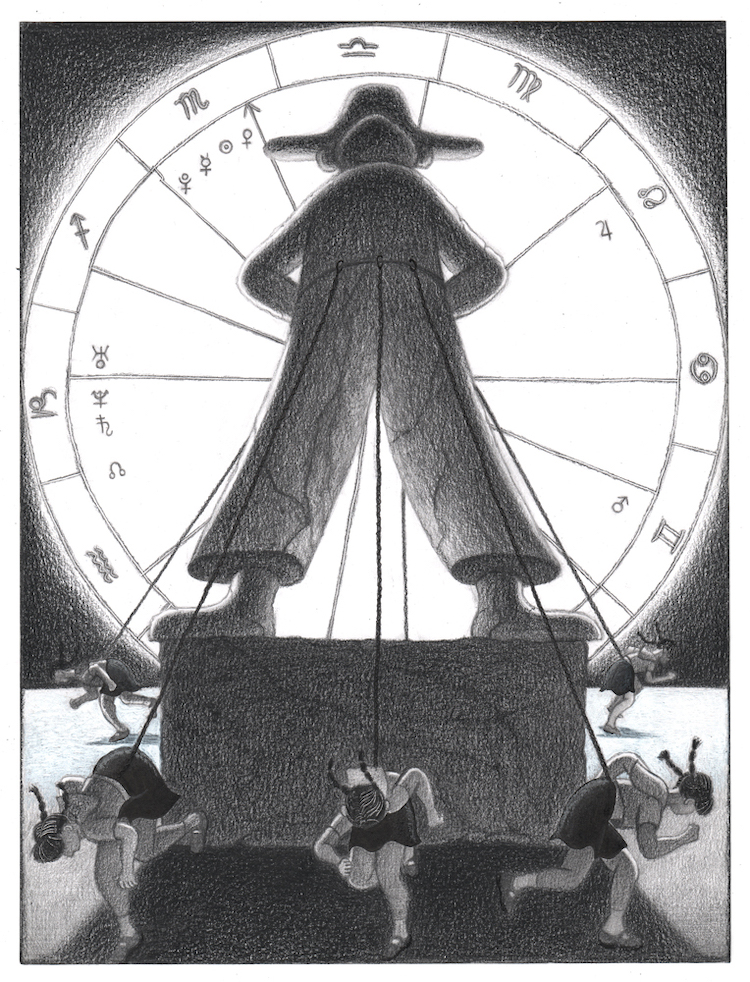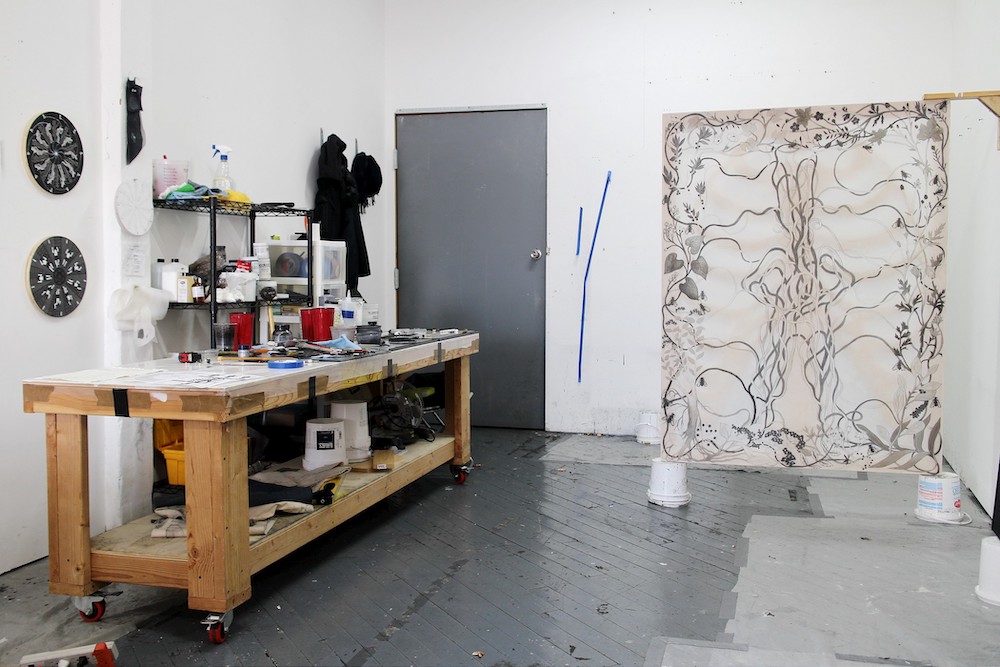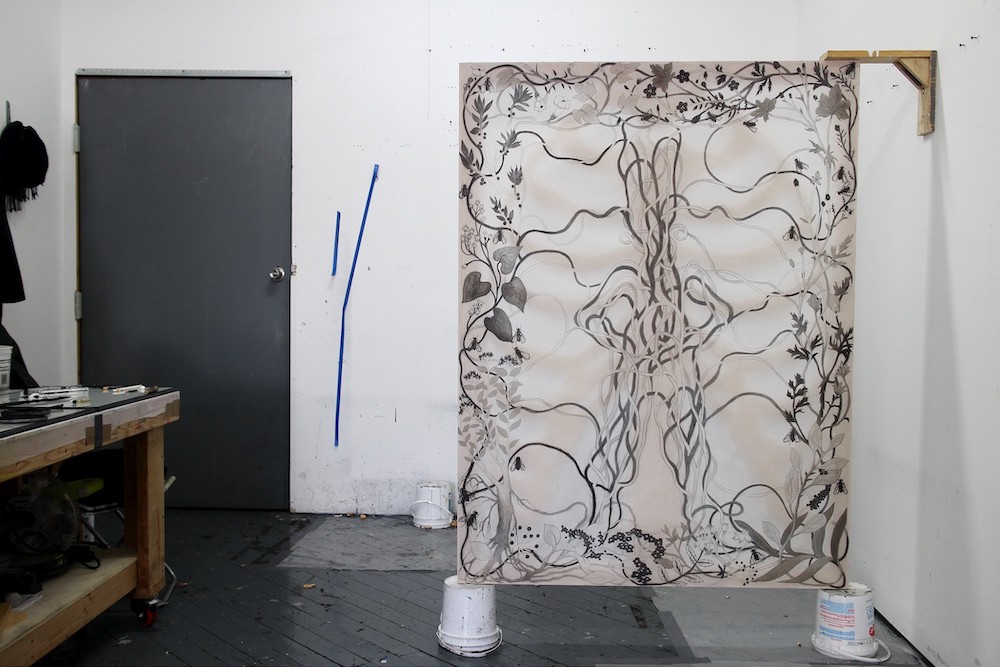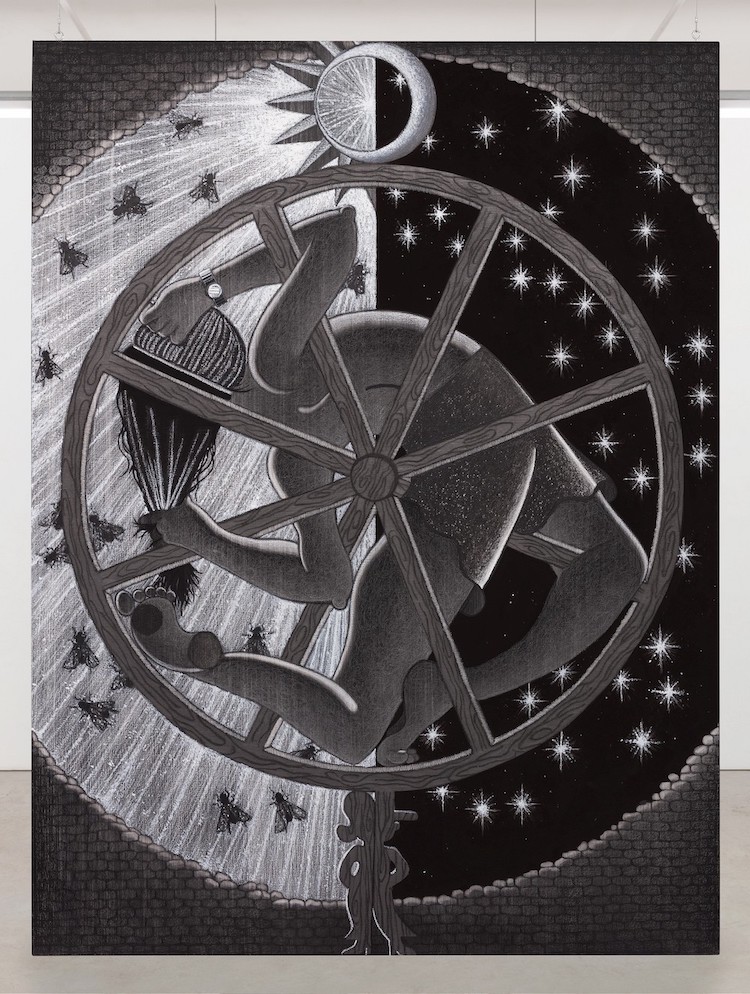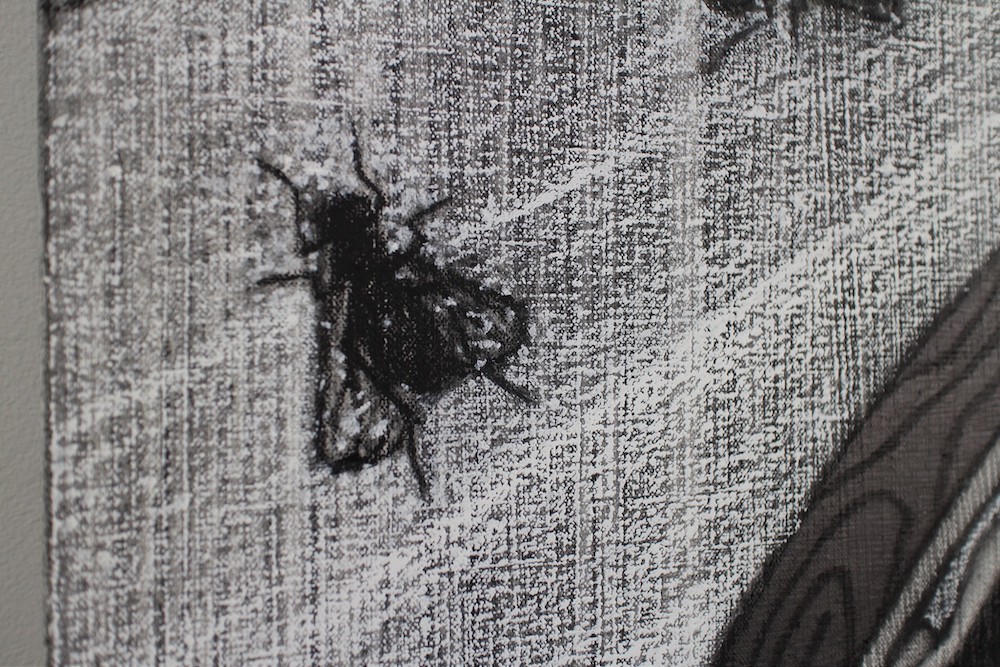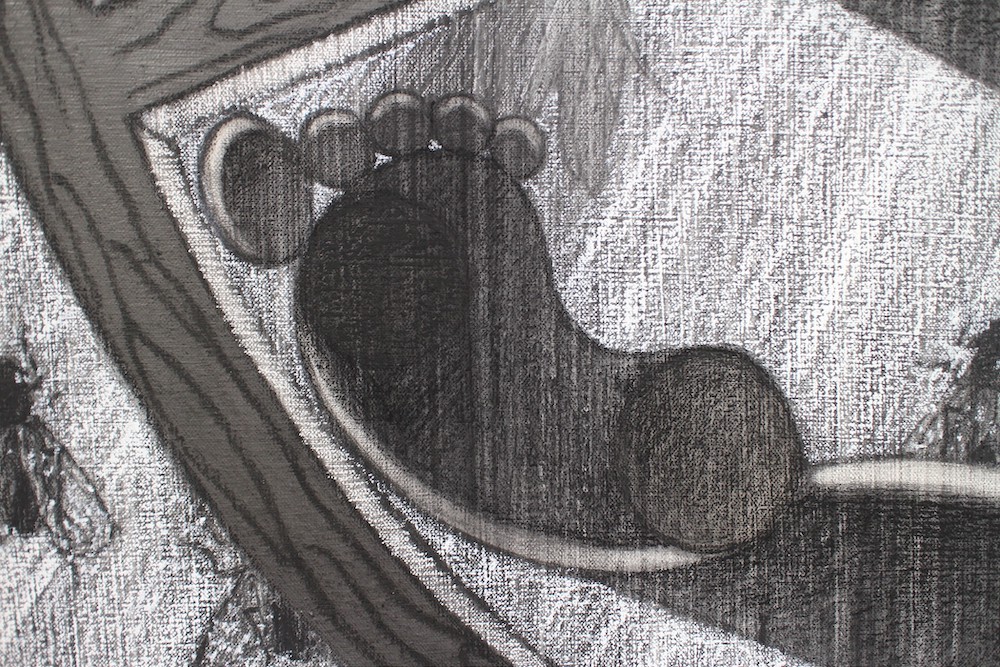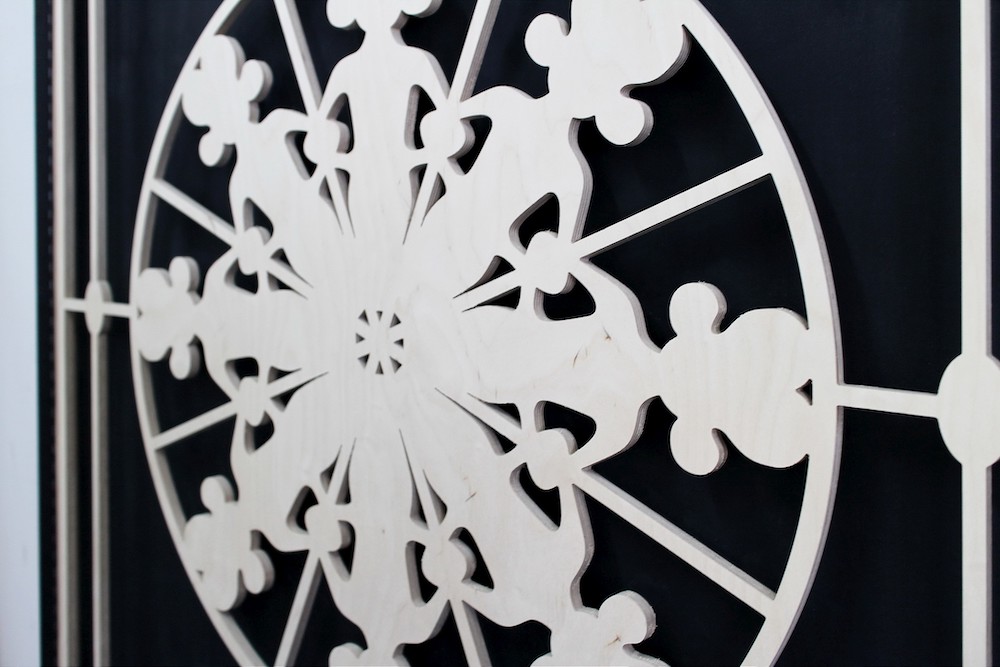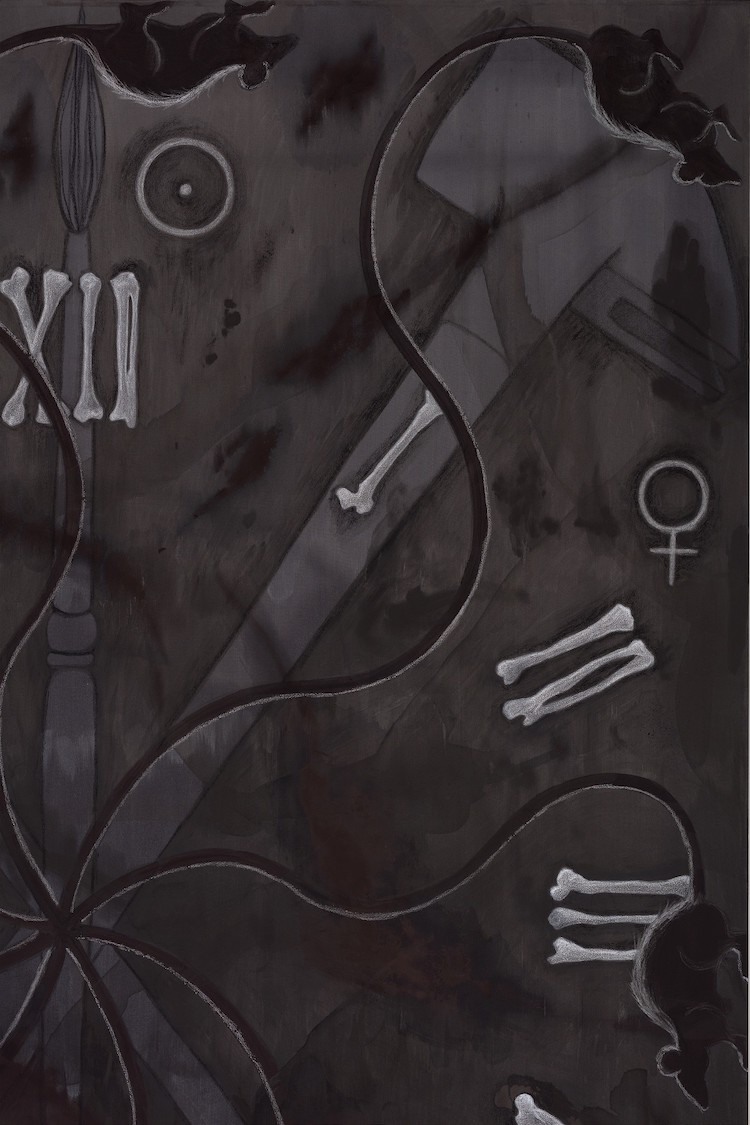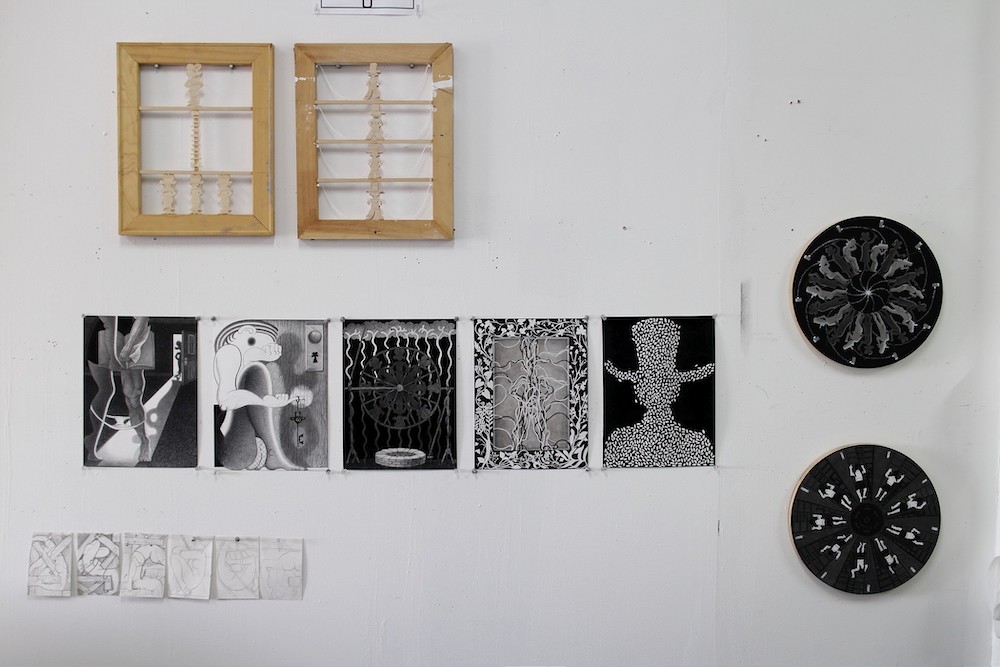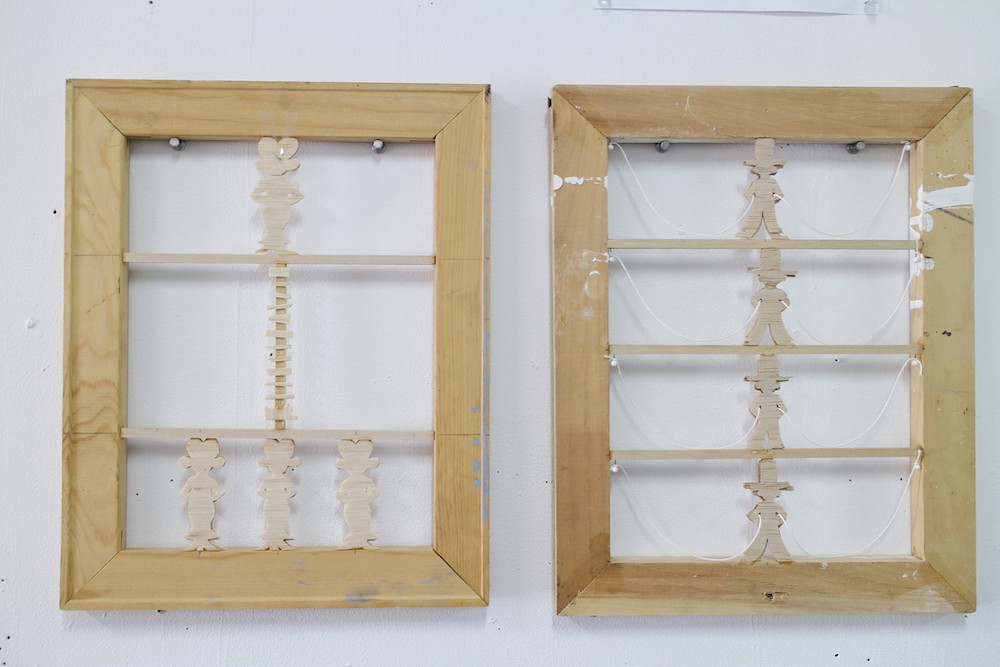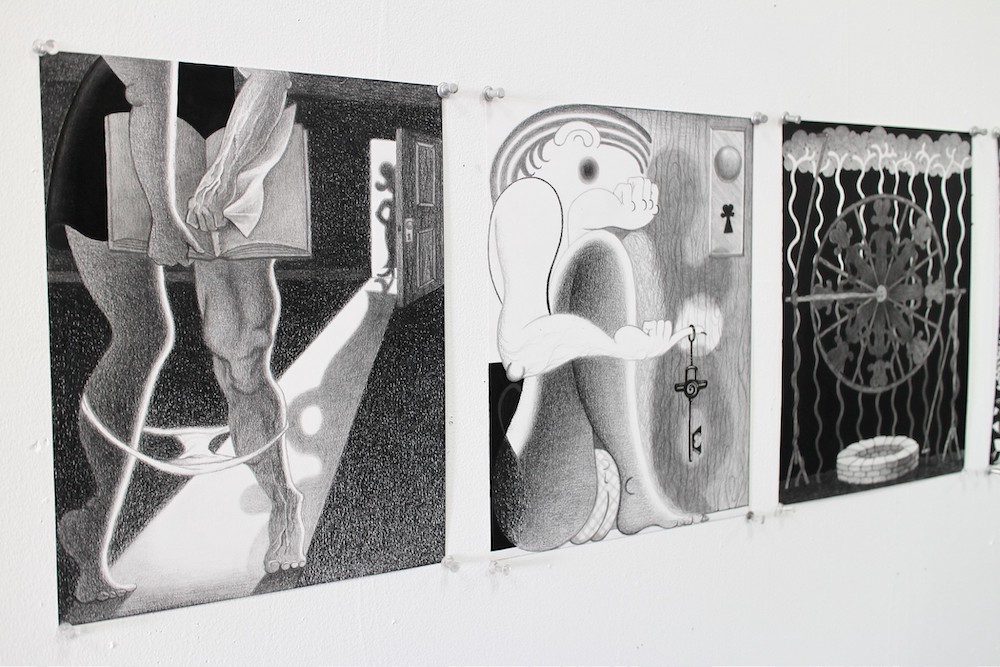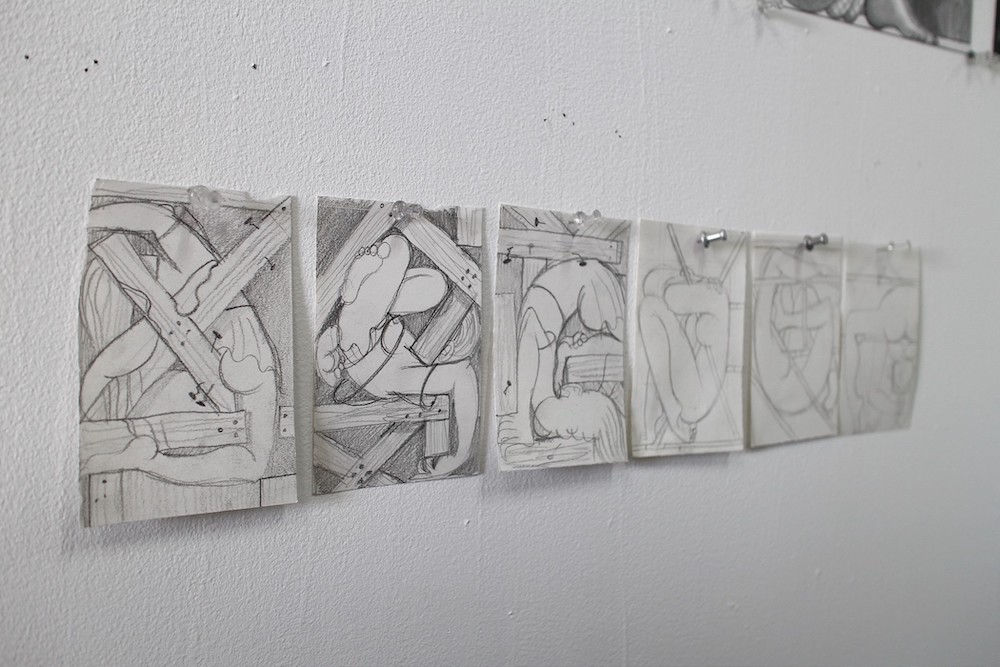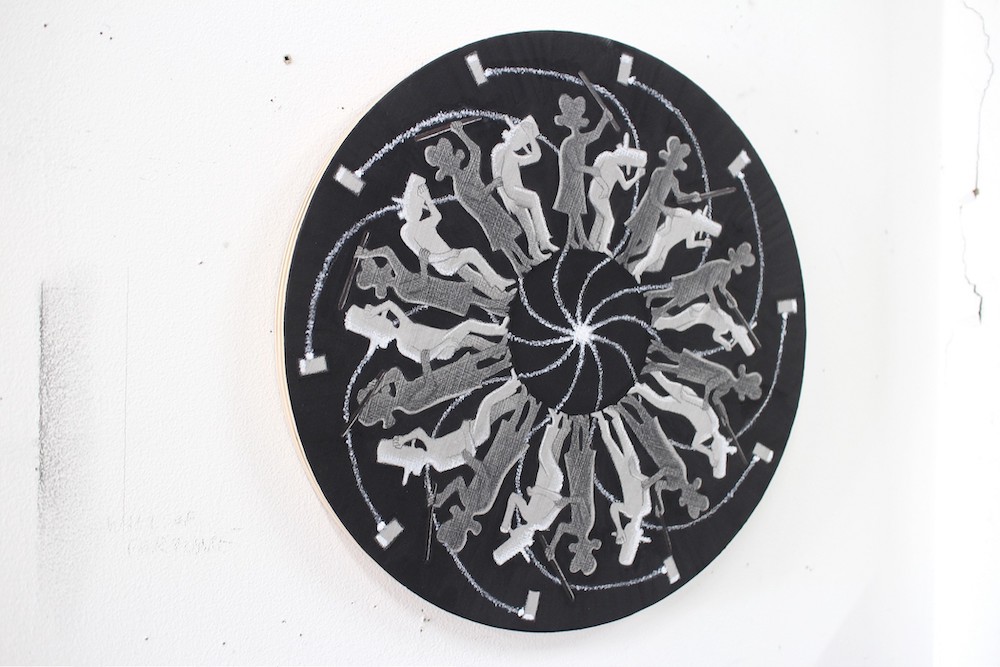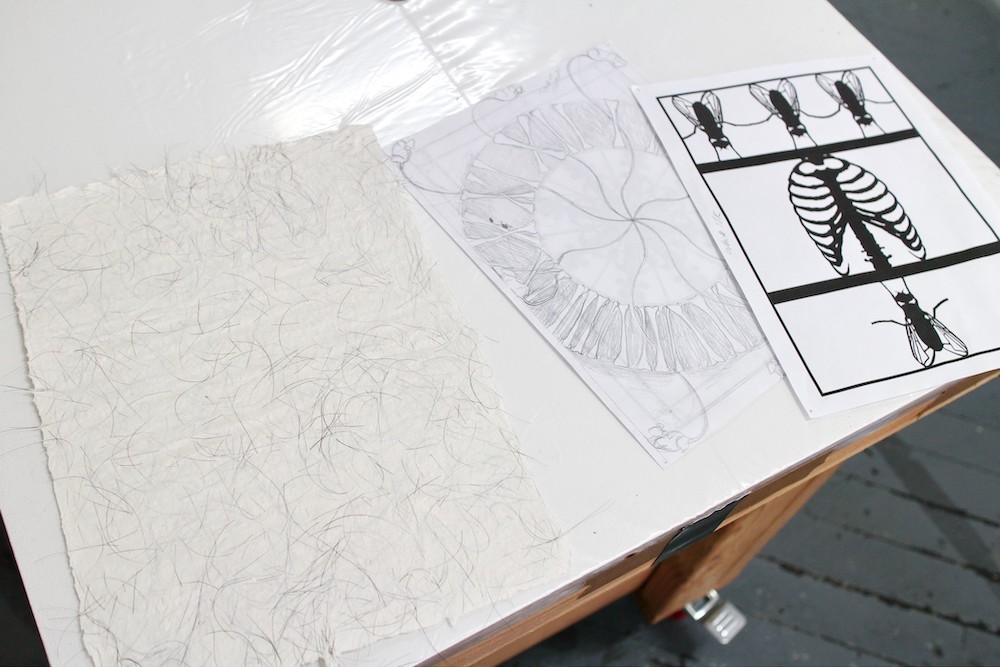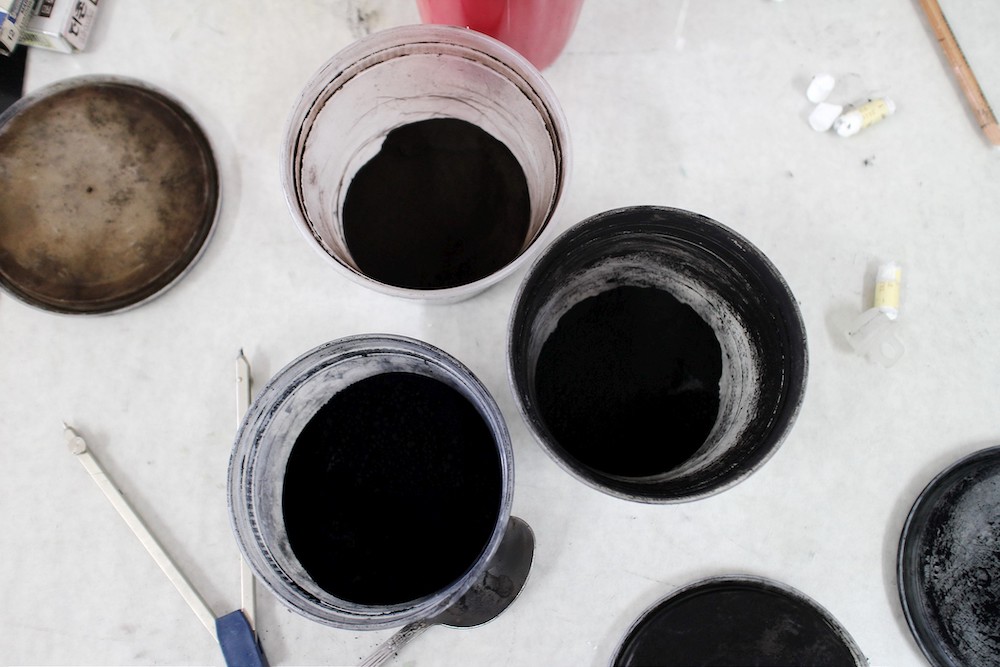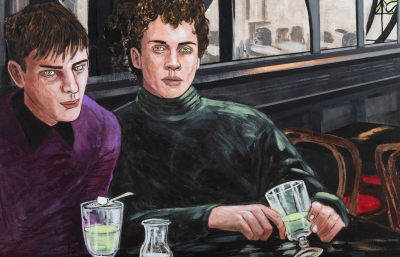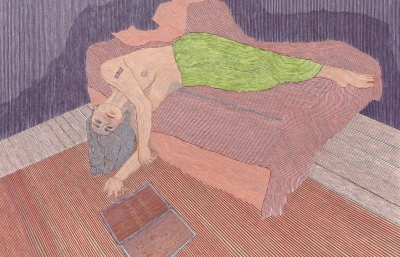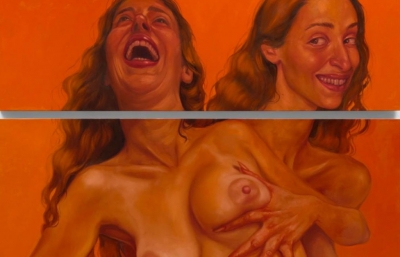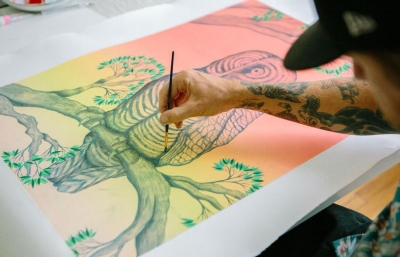Canadian-Korean artist Cindy Ji Hye Kim has been taking the art world by storm with her unconventional works that unexpectedly mix painting and illustration, horror and humor, content and concept. Through her restricted cast of recurring characters, the NYC-based artist constructs superficially playful visuals that disguise a more serious, even sinister narrative. Working exclusively in black and white, utilizing cartoon-like aesthetics, Kim is capable of capturing the viewer's attention with a concealed depiction of borderline horrifying scenes filled with her own life experiences.
A couple of weeks ago, when social distancing wasn't a thing quite yet, we got an exclusive peek at Kim's newest pieces she was preparing for her solo debut, Riddles of the Id, with Rodolphe Janssen Gallery in Brussels. We used the opportunity to chat about this particular body of work and her unusual creative approach.
Sasha Bogojev: Is there a particular concept behind the body of work you'll be presenting in Brussels?
Cindy Ji Hye Kim: I'm focusing on the formal qualities of my paintings, mainly the grisaille palette and the stretcher bars. These elements both share the concept of the hidden and the unseen— the grisaille palette being the underpainting scheme that's meant to be painted over with color, and the stretcher bars as concealed supporting structure behind a picture frame.
These formal qualities, of the hidden and the unseen, become metaphors for much of the narratives in my work. I'm interested in charging the unconscious with materiality, and to me, this urge feels like a self-imposed "duty" as an artist. The act of trying to represent the unconscious is maddening because it gives the illusion of some sort of understanding at the end. I love looking at artist's notebooks and sketches (Proust's drafts of Swann's Way, x-rays of Degas's sculptures, Balthus's numerous revisions of his paintings, for example), not because their process feels more authentic or revealing than the artworks on display. But because I find them absolutely psychotic. What kind of logic was at play when deciding this or that, and why did they go with this and not that? These questions that try to rationalize the artist's decision-making process start to sound absurd, and it's productive for me to constantly ask these questions, as if holding up a mirror, at myself, at my hand, and at my psyche when I create images.
Where is the title, Riddles of the Id, coming from?
I was thinking about the ways in which the unconscious manifests. In dreams, in behaviors, preferences... I find it often puzzling, and find the interpretations unsatisfying. So I wanted the title to reflect that.
What do your recurring characters represent and what kind of narratives are they usually part of?
There are three main characters that reoccur in my work: the housewife mother, the capitalist father (man with the hat), and the schoolgirl child. To me, it's a metaphorical family defined by work, constantly held up in the production of time. To me, the capitalist father represents the past, the memories that course through my veins. The housewife is a possible cut-out of the future, and the schoolgirl is the paralyzing present. The schoolgirl has all the qualities of a protagonist: fated, tragic and comic, and full of doubt. I want to charge this family triad with violence and libidinal energy, as I see these emotions as a defense against indolence and passivity, which I see as the main interruption to the narrative structure. The cycle of arousal and repulsion towards fate becomes the eternal task for the schoolgirl.
For this particular body of work, I'm asking myself: "What is the love I feel for my parents, my country, and my God?" I say that the schoolgirl is a fated character because she wrestles between her rational mind (secular, libertarian, with a sense of volition) and her primal urges (ties to her institutions, controlled by the unconscious). Her actions are somehow suspended from the moral judgment in this wrestling, and these are classic traits I admire in antiheroes like Oedipus and Hamlet.
What attracts you to working with graphite and where is the concept of see-through screens and custom canvas stretchers coming from?
I'm attracted to graphite because it is banal and ubiquitous. A pencil is the most immediate medium for me, like a voice to my hand. I'm also attracted to how graphite interacts with light, especially when I make paint out of the powder. I think graphite has a wonderful combination of both shyness and aggression compared to other colors. It shines and fades in unexpected places.
I've been using skeletal imageries to design my stretcher bars—the two works shown at Foxy Production last year (Mister Capital and Madame Earth) used the imageries of a spine and femurs and fibulae. For one of the paintings I'm presenting at Rodolphe Janssen, I use the image of a rib cage as stretcher bars (the piece is titled Riddles of the Id, which the exhibition is named after). The concept of confinement and bondage has always been a huge part of my work, and one of the ways I explore this concept is by utilizing the stretcher bars as both the container of images and the frame for the painting object.
Using silk organza as a painting surface is a new direction in my practice, and I was first attracted to the fabric for its partial transparency. It's not like vinyl or plexiglass that have totally transparent surfaces. I needed a fabric that had enough opacity to carry the paint and was also transparent enough for the casted shadows of the stretcher bars to show through. The two paintings (Riddles of the Id and The International) are meant to be installed in front of windows. Similar to how graphite behaves with light, I'm attracted to the ways in which the shadows appear and disappear on the surface when the lights change with time.
Photos by Sasha Bogojev, with additional photography by Lance Brewer

